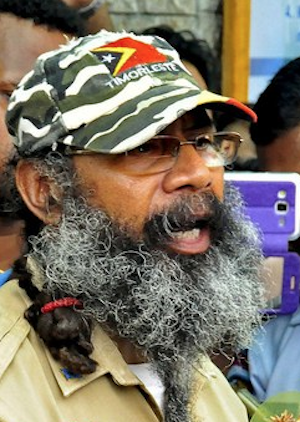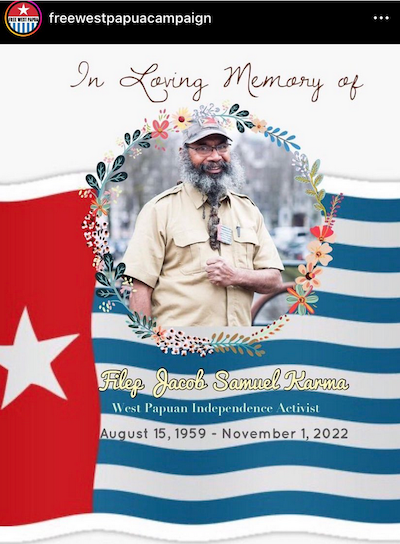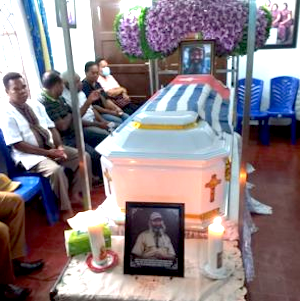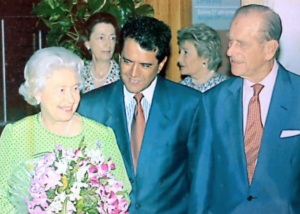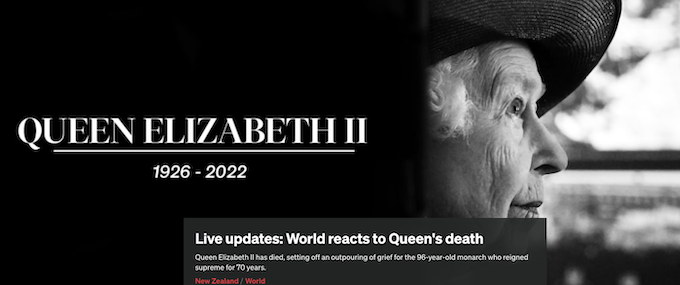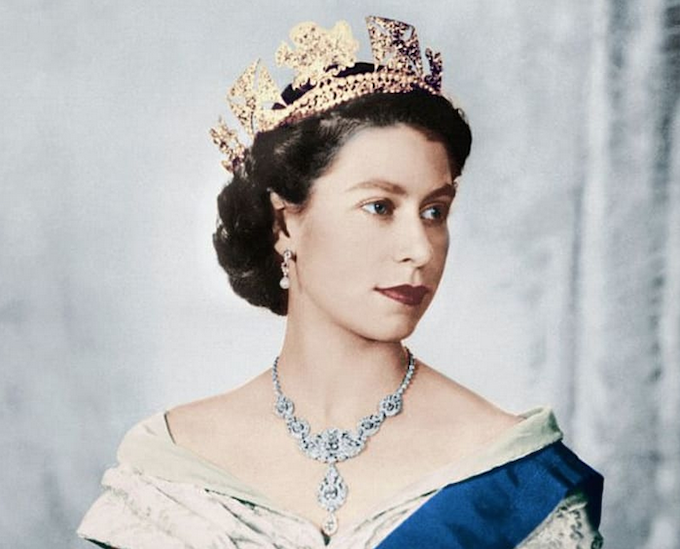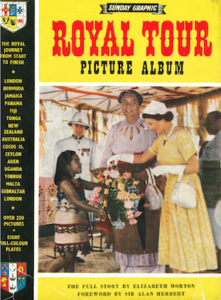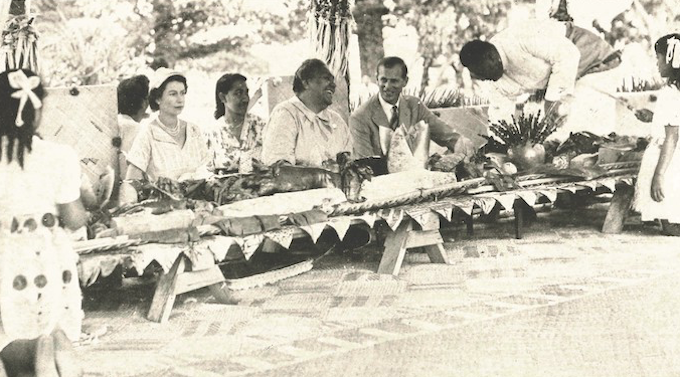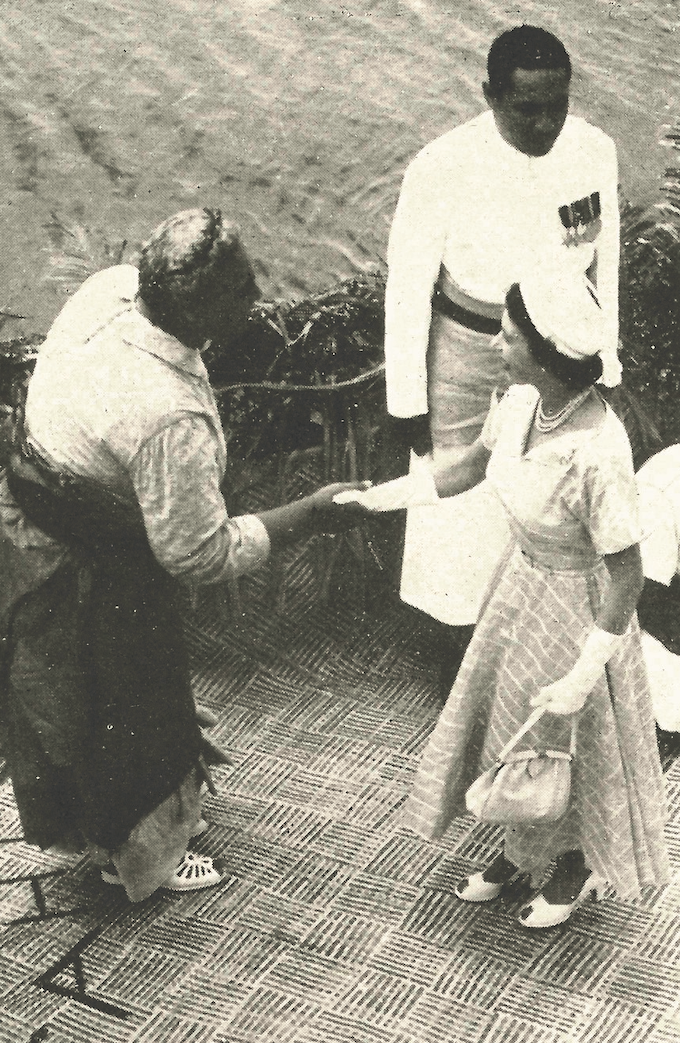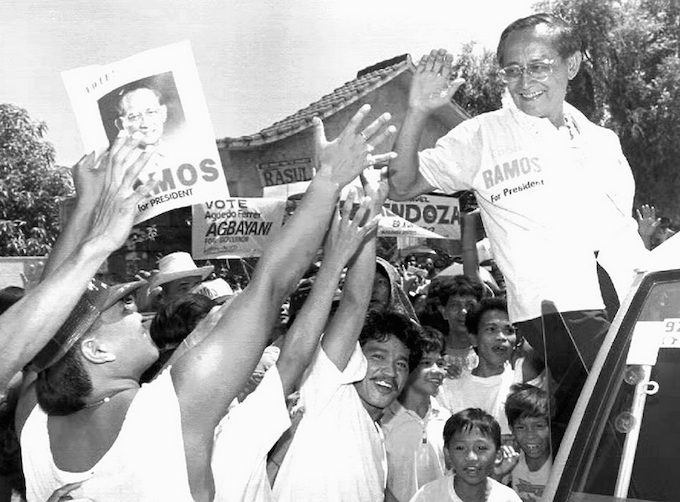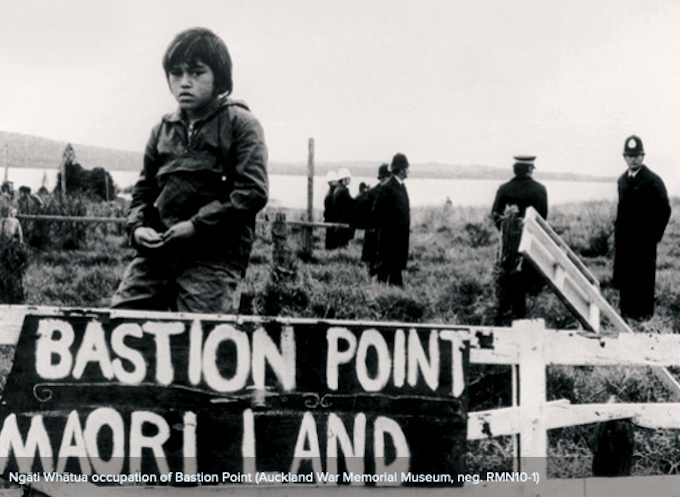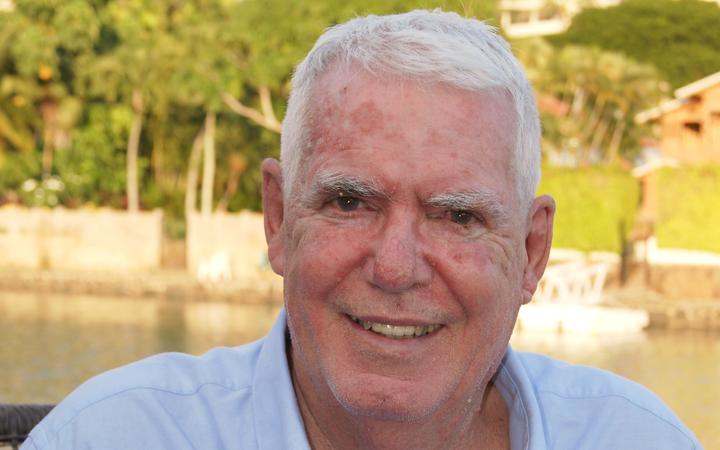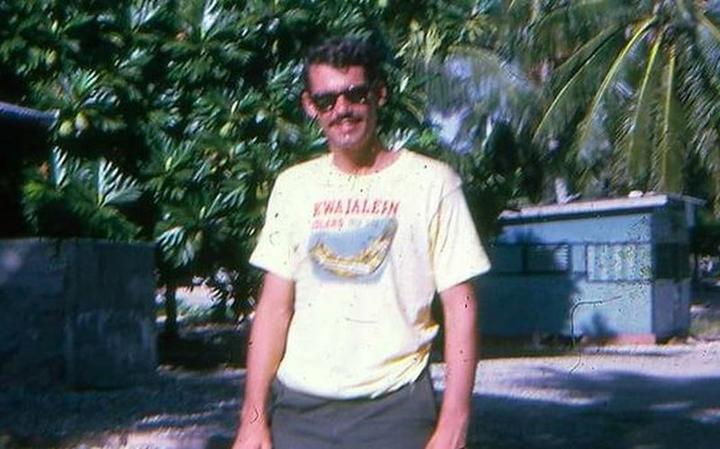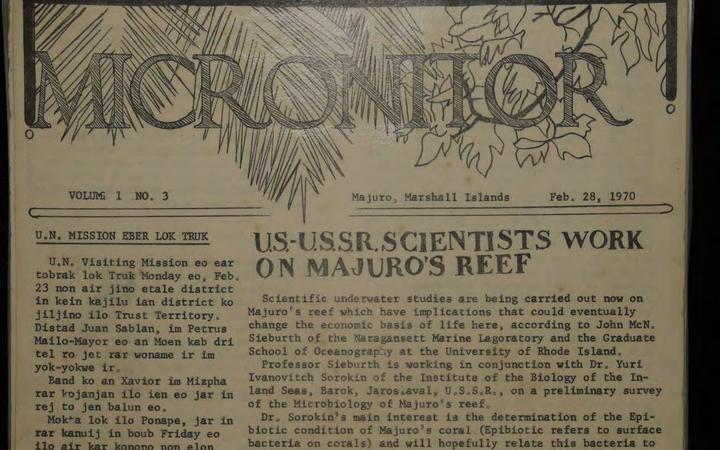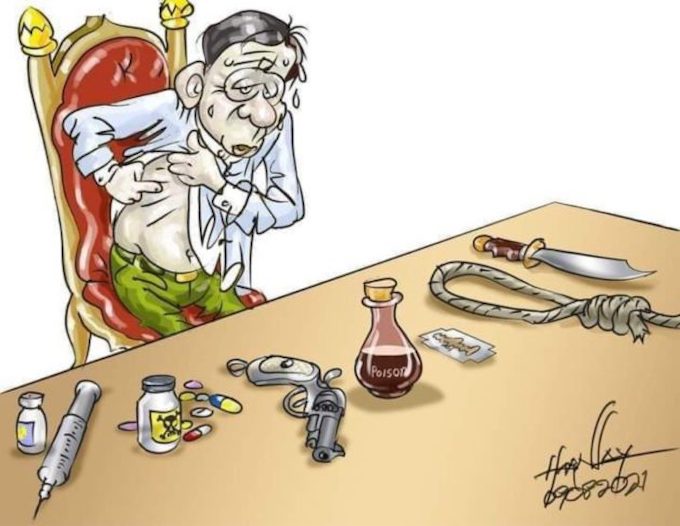When Clinton-era Secretary of State Madeleine Albright died of cancer last month, a stream of fawning obituaries hailed her as a hero of NATO, a feminist icon and a “champion of human rights and diplomacy” (CNN, 3/24/22).
Most coverage failed to levy any criticism at all of Albright’s actions in government, despite her presiding over a critical turning point in the American Empire. For the foreign policy establishment, the ’90s under Albright solidified the US self-image as the “indispensable nation,” ready and able to impose its will on the world, a position with repercussions that still echo today. Instead of critically exploring this legacy, corporate media opted for celebration and mythmaking.
‘Icon’ and ‘trailblazer’

Reuters‘ obituary (3/23/22) for “the first female US secretary of state and, in her later years, a pop culture feminist icon.”
Some of the coverage focused on Albright as a “feminist icon” (Reuters, 3/23/22; USA Today, 3/23/22) breaking the glass ceiling. A commonly used term was “trailblazer” (e.g., NPR, 3/24/22; Washington Post, 3/23/22).
The New Yorker (3/24/22) declared, “Madeleine Albright Was the First ‘Most Powerful Woman’ in US History.” CNN (3/24/22) went as far as to call Albright an early progenitor of “feminist foreign policy.”
NPR (3/24/22) claimed that Albright “left a rich legacy for other women in public service to follow.” BuzzFeed (3/23/22) found time to discuss the meaning of the jewelry she wore when meeting foreign leaders.
There is nothing wrong with remarking on the significance of a woman taking charge in the historically male-dominated halls of US power. However, it is far more important to take a critical look at her policies, including whether they jibe with the tenets of feminism as generally understood—something few in the media chose to do.
Media fell into this same trap when praising Gina Haspel as the first female head of the CIA, or when they applauded the top military contractors for having female heads (FAIR.org, 6/28/20). Similarly, Albright’s violent legacy is being obscured by seemingly progressive language.
‘More children than died in Hiroshima’

Madeleine Albright telling 60 Minutes (5/12/96) that half a million dead children is a price worth paying.
One of the first things many progressives think of when they think of Albright is her championing of the sanctions against Iraq during the ’90s. In between the two US wars on Iraq, Albright presided over crushing sanctions aimed at turning the Iraqi population against the Ba’athist government. These sanctions cut off crucial supplies to the nation, starving its people. A UN survey found that the sanctions led to hundreds of thousands of dead Iraqi children.
When Albright was confronted with this figure in an interview with CBS‘s Leslie Stahl on 60 Minutes (5/12/96; Extra!, 11–12/01), Albright’s response was cold:
“We have heard that half a million children have died. I mean, that is more children than died in Hiroshima,” Stahl said. “And, you know, is the price worth it?”
“I think that is a very hard choice, but the price, we think, the price is worth it.”
The UN numbers have since been revised downward, but the unavoidable fact is that Albright accepted the number she was given, took willful responsibility for the deaths and concluded that they were “worth it” for the purpose of turning the Iraqi people against their government.

Ahmed Twaij (Al Jazeera English via Common Dreams, 3/27/22): “The most prominent memory of Albright that I have in my mind is from an interview she gave to CBS 60 Minutes in 1996.”
While so many Americans seem to have forgotten this shameful display, the rest of the world has not. Ahmed Twaij, an Iraqi writing in Al Jazeera (3/27/22), said that his “most prominent memory of Albright” was that notorious interview:
As an Iraqi, the memory of Albright will forever be tainted by the stringent sanctions she helped place on my country at a time when it was already devastated by years of war.
Despite its resonance around the world, the quote wasn’t even referenced in many of the retrospectives FAIR reviewed. USA Today (3/23/22) mentioned that Albright received “criticism” for calling the deaths “worth it,” and Newsweek (3/23/22, 3/25/22, 3/23/22) mentioned the quote in some of its coverage. But it went missing from the New York Times (3/23/22, 3/25/22), Washington Post (3/23/22), NBC.com (3/23/22), CNN.com (3/24/22, 3/26/22), New Yorker (3/24/22) and The Hill (3/24/22).
Guaranteed shootdown
Gen. Hugh Shelton, former chair of the Joint Chiefs of Staff, recounts in his book how Albright suggested to him that the US fly a plane over Iraqi airspace low enough to be shot down, thus giving the US an excuse to attack Saddam Hussein. Shelton recalls Albright’s words:
What we really need in order to go in and take out Saddam is a precipitous event—something that would make us look good in the eyes of the world. Could you have one of our U-2s fly low enough—and slow enough—so as to guarantee that Saddam could shoot it down?
Albright was quickly rebuffed, but she was later able to get her wish of war in Iraq. Her efforts culminated in the Iraq Liberation Act, signed in October 1998, which made seeking regime change in Iraq official US policy.
As the New York Times (3/23/22) mentioned in its obituary, Albright threatened the Ba’athist leader with bombing that year if he didn’t open the country to weapons inspectors. Even though Kofi Annan brokered an agreement on the inspectors, the US bombed anyway in December 1998.
The Times didn’t explore these events further—not mentioning that the administration justified the bombing using the debunked pretext of Saddam’s weapons of mass destruction—and instead continued ahead with its largely positive obituary.
Rewriting Yugoslav history

When Time magazine (5/9/99) called Kosovo “Albright’s War,” it meant that as a compliment.
One of Albright’s most notable moments during her tenure as secretary of state was the 78-day bombing campaign in Yugoslavia in 1999. Today, the bombing is hailed as a major victory by the forces of democracy, and Albright’s role is cast in a positive light.
NPR’s three sentences (3/24/22) on the subject show the dominant version of the events:
As chief diplomat in the late ’90s, Albright confronted the deadly targeting of ethnic Albanians in Kosovo. Time magazine dubbed it Madeleine’s War. Airstrikes in 1999 eventually led to the withdrawal of Yugoslav forces.
Americans were told at the time that the war solidified the US as “an indispensable nation asserting its morality as well as its interests to assure stability, stop thugs and prevent human atrocities” (Time, 5/9/99). The Washington Post (3/23/22) seized on this myth, calling Albright “an ardent and effective advocate against mass atrocities.” In this story, she is a hero for mobilizing the timid American giant to use its military might on behalf of humanitarian and democratic ideals.
But the truth is that the bombing Albright advocated was motivated less by humanitarian concerns and more by the US goal of breaking up Yugoslavia and establishing a NATO-friendly client state via the Kosovo Liberation Army. Indeed, the US’s negotiating tactic with Serbian President Slobodan Milosevic was to offer the choice of either occupation by NATO or destruction. As a member of Albright’s negotiating team anonymously told reporters (Extra!, 7–8/99): “We intentionally set the bar too high for the Serbs to comply. They need some bombing, and that’s what they are going to get.”
Exacerbating bloodshed
One fact that quickly debunks the humanitarian pretext is that the US-led bombing greatly exacerbated the bloodshed. According to Foreign Affairs (9–10/99), 2,500 died during the preceding civil war, but “during the 11 weeks of bombardment, an estimated 10,000 people died violently in the province.” And while Albanian civilians bore the brunt of the violence during the NATO attacks, in the year preceding the bombing, British Defense Secretary George Robertson told the Parliament that the NATO-backed KLA “were responsible for more deaths in Kosovo than the Yugoslav authorities had been” (Monthly Review, 10/07).
As Edward Herman and David Peterson wrote in their detailed essay on Yugoslavia in the Monthly Review (10/07), the US and NATO
were key external factors in the initiation of ethnic cleansing, in keeping it going, and in working toward a violent resolution of the conflicts that would keep the United States and NATO relevant in Europe, and secure NATO’s dominant position in the Balkans.
The concern for ethnic minorities was merely a pretext offered to the American people, and lapped up wholeheartedly by a compliant mass media.
Along with liberal hawks like Samantha Power, Albright helped weaponize human rights and legitimize unsanctioned “humanitarian interventions” around the world. This showcase of unilateral and illegal violence has had direct repercussions around the world, paving the way for US interventions in Afghanistan, Iraq and Libya—to say nothing of the current Russian attack on Ukraine.
Promoting hawkish policy

CBS (3/23/22): “Albright and [President Bill] Clinton clashed with then-UN Secretary General Boutros Boutros-Ghali as she advocated fiercely for U.S. and democratic interests.”
Much of the coverage framed Albright’s Clinton-era career arc as one in which she repeatedly failed to get the US to play a larger role in advancing its ideals in the post-Cold War world. This fight included taking on international institutions that didn’t understand American exceptionalism.
Albright clashed with then–UN Secretary General Boutros Boutros-Ghali “as she advocated fiercely for US and democratic interests,” in the words of CBS (3/23/22). She and Boutros-Ghali butted heads over the US role in peacekeeping operations during crises in Rwanda, Somalia and Bosnia.
In the end, Albright dissented against the entire UN Security Council, using the US veto power to deny Boutros-Ghali a second term as secretary general. His ouster paved the way for the more US-friendly Kofi Annan, as the “Albright Doctrine” took center stage.
In its cover story on “Albright’s War,” Time (5/9/99) described the Albright doctrine as
a tough-talking, semimuscular interventionism that believes in using force—including limited force such as calibrated air power, if nothing heartier is possible—to back up a mix of strategic and moral objectives.
In other words, Albright advocated a policy of unilateral intervention instead of an global order based on international law and mutual obligations. The US could assert itself whenever and wherever it determined the “strategic and moral objectives” were of sufficient importance.
The diplomat was more blunt about the US chauvinism imbued in the doctrine when she spoke to NBC (2/19/98) in 1998:
If we have to use force, it is because we are America; we are the indispensable nation. We stand tall and we see further than other countries into the future.
‘Albright was right’

A CNN op-ed (3/24/22) positively cited Albright’s comment to Joint Chiefs of Staff chair Colin Powell: “What’s the point of having this superb military you’re always talking about if we can’t use it?”
The media reflect positively on this mindset that “blended her profound moral values from her childhood experience in Europe with US strategic interests,” according to the New Yorker (3/24/22). Some suggested that this mindset should continue to animate American policy.
CNN.com (3/24/22) published an opinion by Elmira Bayrasli that claimed, “The West would be wise to heed Madeleine Albright’s lessons on foreign policy.” She embraced Albright’s hawkish label, saying that “advocating the oppressed and actively upholding human rights…sometimes meant using the might of the American military.”
Hillary Clinton, whose “trailblazing” also obscured the deadly cost of her foreign policy initiatives, published a guest essay in the New York Times (3/25/22) under the headline “Madeleine Albright Warned Us, and She Was Right.” To Clinton, the world still needs Albright’s “clear-eyed view of a dangerous world, and her unstinting faith in…the unique power of the American idea.”
While some pieces were clear in calling her a hawk (e.g., Washington Post, 3/23/22), CNN (3/24/22) wrote, “It is a mistake to see Albright exclusively as a hawk,” because she sat on the board of the National Democratic Institute (NDI) and supported the activities of the US Agency for International Development (USAID). The Hill (3/24/22) also highlighted her support for these organizations, noting that for Albright, “democracy and human rights…were integral to American foreign policy.”
The NDI exists under the umbrella of the National Endowment for Democracy, a deceptively named organization that spends tens of millions of dollars annually promoting and installing US-friendly governments around the world. USAID has long been used as a front for intelligence and soft power initiatives. During Albright’s time in office, USAID was heavily involved in facilitating the further destruction of Haitian democracy, among a myriad of similar activities around the world.
These organizations have been well-documented as extensions of US power and bases for subversive activities, but this history is dismissed in favor of the government’s line that they are genuine conduits for democracy. The methods of empire have evolved, but the Albright coverage continues to obscure this fact. Regime change efforts can be recast as efforts to spread democracy around the world if the press refuses to scrutinize the official line.
NATO expansion

“Madeleine Albright’s NATO expansion helped keep Russia in check,” argued MSNBC’s Noah Rothman (3/24/22)—even as NATO expansion, as predicted, had sparked a bloody Russian invasion of Ukraine.
NATO expansion, a major initiative during Albright’s tenure, has come to the forefront of US discussion in recent months. The Russian invasion of Ukraine is in part a result of the decades-long expansion of the NATO military alliance, despite the warnings of US foreign policy veterans that the expansion was a “policy error of historic proportions.” (See FAIR.org, 3/4/22.)
In 1998, legendary diplomat George Kennan (New York Times, 5/2/98) called NATO expansion “a tragic mistake.” He predicted, “I think the Russians will gradually react quite adversely and it will affect their policies…and then [the NATO expanders] will say that we always told you that is how the Russians are.”
Kennan’s words have proven prophetic, but most articles on Albright’s passing wrote fondly of her role in NATO expansion and the accompanying anti-Russian politics. CNN.com (3/23/22), in an article headlined “Albright Predicted Putin’s Strategic Disaster in Ukraine,” declared that the former top diplomat “died just as the murderous historic forces that she had spent her career trying to quell are raging in Europe again.”
MSNBC.com (3/24/22) declared that “Madeleine Albright’s NATO Expansion Helped Keep Russia in Check.” Columnist Noah Rothman explained that “only the compelling deterrent power of counterforce stays the hand of land-hungry despots.”
The New Yorker (3/24/22) described NATO expansion as one of Albright’s “major achievements,” despite acknowledging that in the wake of the policy, “US interests are indeed threatened more than at any time in three decades by Russian aggression in Europe.”
Some pieces were more reflective. The Conversation (3/24/22) went into detail on her role in expanding NATO, acknowledging that “Albright’s curt dismissal of Russia’s security concerns might seem to have been ill-judged…in light of Russia’s invasion of Ukraine.”
A time for reflection
In the United States, political figures are merged with the culture of celebrity. Too many judge politicos by their force of personality or lines on their resume, rather than the material changes that occurred on their watch. The substantive history of US policymaking is rarely brought up, and political discussion remains surface-level and incomplete.
This celebrity culture is on full display whenever a venerated member of the Washington establishment passes away. We’ve seen similar soft media coverage after the deaths of George H.W. Bush (FAIR.org, 12/7/18), Colin Powell (FAIR.org, 10/28/21) and Donald Rumsfeld (FAIR.org, 7/2/21).
By now, the idea of the United States as the global policeman has been discredited enough to warrant at least some pushback in the corporate press. The passing of one of America’s leading interventionists should be a time for reflection. How did this person’s policies contribute to what is going on now?
Instead, the media decided to use Albright’s death to reinforce the myths and legitimize the policies that have led to so much destruction around the world.
The post Selling Albright as a ‘Feminist Icon’: Was the Price Worth It? appeared first on FAIR.
This post was originally published on FAIR.
